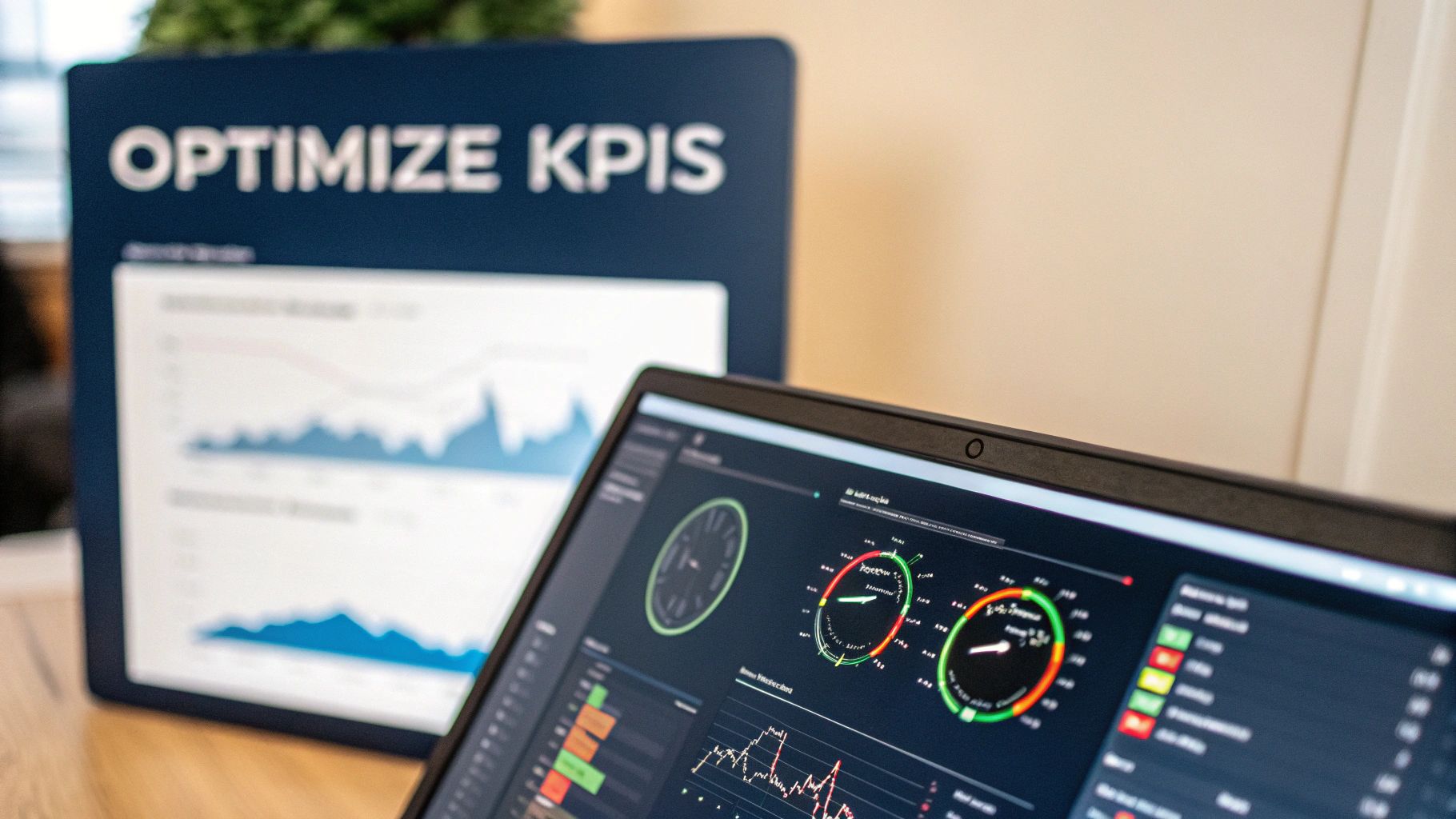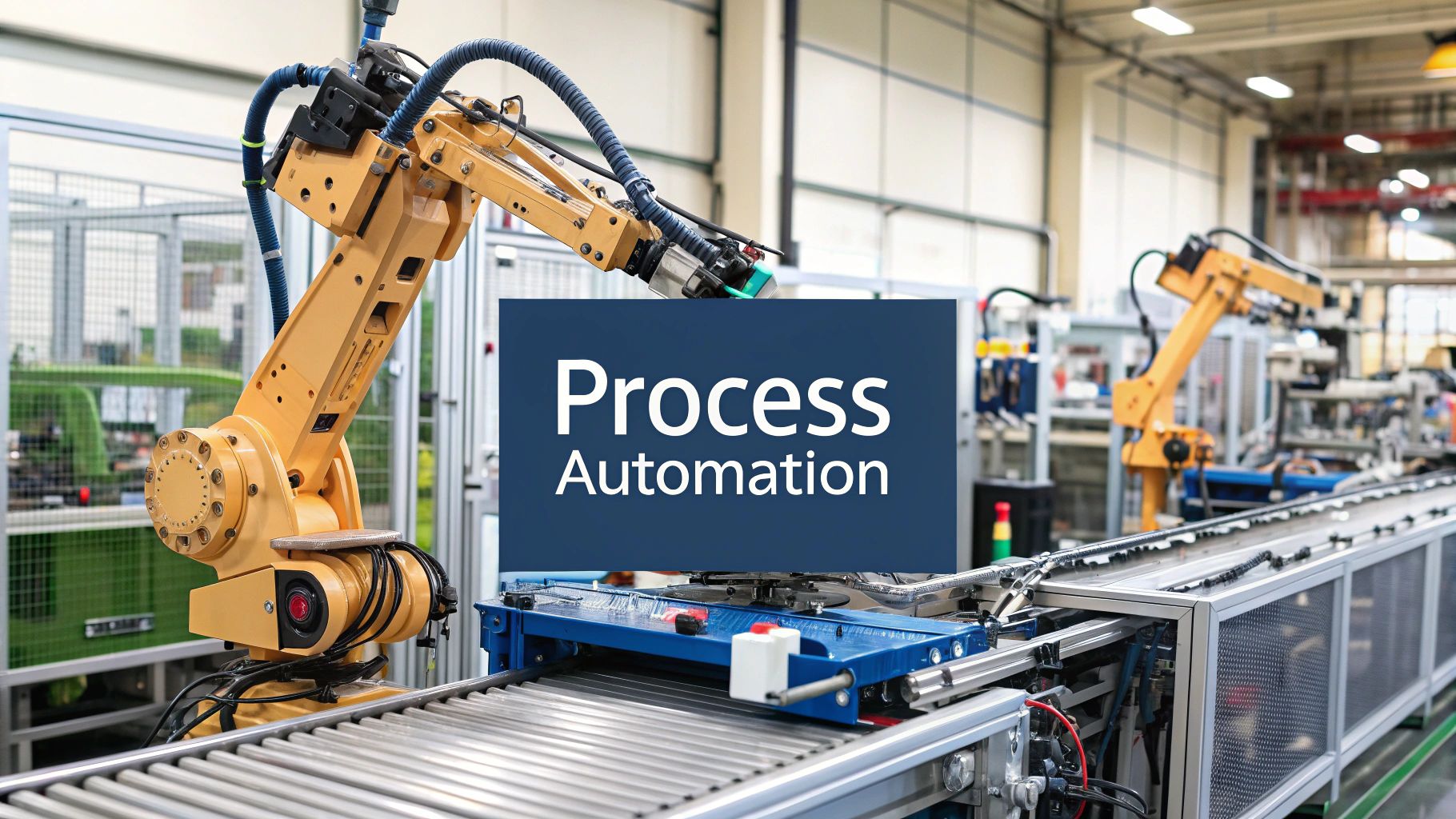The Evolution of Modern Process Optimization

Process optimization has changed dramatically in recent years. What started with manual adjustments and isolated fixes has grown into something much more connected and fluid. Companies are moving away from guesswork and embracing concrete data to drive their improvements. This shift helps them stay competitive and adapt quickly to market changes.
Data analytics now sits at the heart of process improvement. Rather than relying on gut feelings, companies use real numbers to spot problems and measure success. They track specific metrics called Key Performance Indicators (KPIs) to understand what's working and what needs fixing. This approach takes the mystery out of where to focus improvement efforts.
From Traditional Methods to Agile Approaches
The tools we use to improve processes have evolved too. Six Sigma, once the gold standard for process improvement, has seen its usage drop from 21% to 12% in BPM projects over the past decade. You can find more details about these trends here: Process Improvement Statistics.
Companies are choosing more flexible methods instead. Simple process redesign approaches have grown to 28% adoption, showing that businesses want methods they can easily adjust as needs change. Even more striking is the rise of automation, which has reached 33% adoption. This shows how many companies now see automated solutions as key to staying efficient.
The Role of Technology in Modern BPO
New tools have transformed how we tackle process improvement. Modern software lets teams map out workflows, test different scenarios, and find the best ways to get work done. Robotic Process Automation (RPA) handles repetitive tasks, while artificial intelligence helps make smarter decisions. These tools not only speed things up but also reduce mistakes. As technology keeps advancing, we'll likely see even more ways to improve how work gets done, with greater emphasis on data, automation, and quick adaptation to change.
Maximizing Returns Through Strategic Process Enhancement
Process improvements are critical for achieving strong business results. More companies are going beyond simple efficiency to calculate the true financial value of their optimization efforts. The focus has shifted from cost-cutting alone to finding strategic opportunities that boost revenue and profit.
Building a Compelling Business Case for BPO
A strong business case needs clear goals tied directly to measurable outcomes. For example, a company might target a 50% reduction in customer onboarding time to drive higher satisfaction and sales conversion. This direct connection between process changes and financial impact helps get executive support and budget approval.
Identifying High-Value Optimization Opportunities
Some processes have much more potential impact than others. Finding these high-value targets requires deep analysis of business operations through:
- Performance data review
- Stakeholder discussions
- Process mapping and workflow analysis
By focusing on processes that most affect profits, companies see better returns. Recent data shows significant results - a Bain & Company survey found 21% of businesses achieve 10% or more in savings through process optimization. Additionally, 74% of IT and engineering leaders report automation saves nearly half their time, with 51% seeing cost reductions. Learn more: Business Process Management Statistics
Measuring Success with Meaningful Metrics
Tracking the right metrics is essential once changes are implemented. These measures should directly connect to the original goals. For instance, if the target was faster customer onboarding, the team would monitor average onboarding duration. Regular reporting keeps stakeholders informed of the project's value.
Maintaining Momentum and Stakeholder Engagement
Process improvement needs to be ongoing, not a one-time effort. Success requires building a culture where employees constantly look for ways to work better. This means providing teams with tools and support to identify and implement changes. Regular updates help maintain executive support and keep improvement efforts moving forward.
Building Robust Process Monitoring Systems

Once you've improved your business processes, you need a way to make sure they keep running smoothly. Process monitoring systems act like your business's dashboard - just as your car's gauges show speed and fuel levels, these systems help you track performance and spot issues early.
Setting Up Smart Tracking Tools
The first step is picking the right key performance indicators (KPIs). Choose metrics that directly show whether your processes are meeting their goals. For example, if you want faster order processing, track the time between when orders come in and when they ship out. Set up automatic alerts for when things start going off track - this helps you fix small issues before they become big problems.
Catching Problems Early
Good monitoring helps you spot subtle changes that could signal bigger issues down the road. By watching your numbers closely, you can notice small shifts that might mean trouble is brewing. Take customer support calls - a slow increase in call volume might mean customers are having trouble with your product. Only 4% of companies track their processes in detail, while 69% do occasional reviews but miss day-to-day changes. Learn more in this BPM report from Comidor.
Using Data for Smart Decisions
Smart companies use data tools to watch their processes in real time. Live dashboards show what's happening right now, so teams can jump on problems quickly. Advanced data analysis can also reveal hidden patterns you might miss just looking at basic numbers. This helps companies stay ahead of issues and keep improving over time.
Keeping Things Running Smoothly
Improving your processes isn't a one-time project - it needs ongoing attention. Regular check-ups on your KPIs, careful data review, and quick fixes keep everything running well. As markets and customer needs change, your processes need to adapt too. By making improvement part of your company culture, you build a stronger, more efficient organization that stays competitive.
The Role of Technology in Process Excellence
Modern organizations are finding new ways to improve their operations using Artificial Intelligence (AI), Robotic Process Automation (RPA), and advanced analytics. Let's explore how businesses can use these tools effectively and what practical steps they can take to implement them.
Making Tasks Easier with RPA
Think of RPA as your digital assistant that handles routine work like data entry, invoice processing, and scheduling. When these basic tasks are automated, your team can focus on more meaningful work that requires human creativity and strategic thinking. For example, an accounting department can use RPA to automatically process invoices, which saves time and reduces mistakes.
Using AI to Make Better Decisions
When AI analyzes large sets of data, it finds patterns that people often miss. This helps businesses make smarter choices based on real information rather than guesswork. Take a retail store that uses AI to study customer purchases - it can predict what products will sell well next season and adjust inventory accordingly. This helps prevent running out of popular items while avoiding excess stock of less popular ones.
Finding Opportunities with Advanced Analytics
By looking closely at business data, analytics tools help spot where processes can work better. This means examining information from different sources to find bottlenecks and areas that need improvement. For instance, a marketing team can use website analytics to see which campaigns bring in the most customers, helping them spend their budget more effectively.
Making Technology Work For You
To get the most from these tools, businesses need a clear plan. This includes:
- Looking at current processes to find where technology can help most
- Picking the right tools for specific needs
- Making sure data stays secure
- Training employees so they feel comfortable with new systems
- Checking regularly to make sure the technology keeps delivering value
Success comes from careful planning and making adjustments as needed. When done right, these tools can help create lasting improvements in how work gets done.
Creating a Culture of Continuous Improvement

Real success in process improvement isn't a quick fix – it requires building a workplace where everyone feels empowered to suggest and implement positive changes. Here's how companies can build and maintain this type of environment.
Engaging Employees at All Levels
Getting everyone involved starts with honest conversations about why these improvements matter. When employees understand how better processes can reduce tedious work and open up opportunities for more meaningful projects, they're more likely to get on board. Training and resources are essential - give people the tools they need to spot problems and propose solutions.
Overcoming Resistance to Change
Let's be real - change is hard. Some team members will push back against new ways of doing things. The best approach? Open dialogue about concerns, active listening, and plenty of support during transitions. Quick wins help too - when people see concrete benefits early on, they're more likely to embrace future changes.
Building Sustainable Improvement Programs
To make improvements stick, you need structure. Consider setting up:
- Teams dedicated to process improvement
- Regular review meetings
- Clear metrics to track progress
- Project management tools to coordinate efforts
This framework helps ensure that improvement isn't just a one-time thing but becomes part of your company's DNA.
Fostering an Environment of Innovation
Good ideas can come from anywhere. Create spaces where people feel safe sharing suggestions, even if they challenge "the way we've always done things." Simple tools like:
- Anonymous suggestion boxes
- Regular team brainstorming sessions
- Open-door policies with management
These approaches help bring valuable insights to the surface. Remember to celebrate wins, both big and small.
Recognizing and Rewarding Contributions
When people go above and beyond to improve processes, acknowledge it. This could be as simple as public praise in team meetings or as formal as quarterly awards. The key is making recognition:
- Timely
- Specific
- Meaningful
Highlighting these contributions shows everyone that their ideas matter. Over time, this creates momentum where improvements build on each other, driving both efficiency and employee satisfaction.
Implementing Sustainable Process Excellence

Making real improvements to your business processes takes more than a one-time effort. Success comes from building changes that keep delivering value over time. Let's explore how to make process improvements stick and continue bringing results.
Building Lasting Success
The key ingredients for lasting process improvement include open communication between teams, dedicated staff time for improvement work, and keeping track of results. Simple practices like weekly check-ins to review how processes are working can make a big difference in maintaining momentum.
Getting your team invested in improvement is just as important. When employees feel empowered to spot problems and suggest better ways of working, they take ownership. This helps make continuous improvement part of your company's everyday operations.
Common Mistakes to Avoid
Watch out for the temptation to focus only on quick fixes. While early wins help show progress, they shouldn't come at the cost of long-term solutions. Another frequent misstep is failing to document process changes, which can lead to confusion later.
Not providing enough training on new processes can also derail improvement efforts. Taking time to properly train everyone pays off by ensuring staff understand and follow the improved ways of working.
Making Improvements Last
Here are proven ways to keep process improvements working well over time:
- Track key metrics: Monitor performance regularly to catch any issues early
- Assign clear responsibilities: Have specific people accountable for each process
- Get ongoing feedback: Listen to input from the people doing the work to keep refining processes
This creates an environment where processes keep getting better based on real business needs.
Keeping Performance Strong
Maintaining optimized processes requires consistent attention. Put systems in place to track performance and review results regularly. This might include automated performance alerts or scheduled process reviews.
Change management skills also make a big difference in keeping improvements on track. Clear communication about changes, thorough training, and addressing concerns help teams adapt smoothly to new ways of working. Following these practices helps organizations get the most lasting benefit from their process improvement work.
Are you ready to break free from conventional paths and achieve true freedom? Tune in to The Covered Call Podcast for inspiring stories and strategies to unlock your untapped potential. Learn more about achieving freedom through The Covered Call Podcast.

